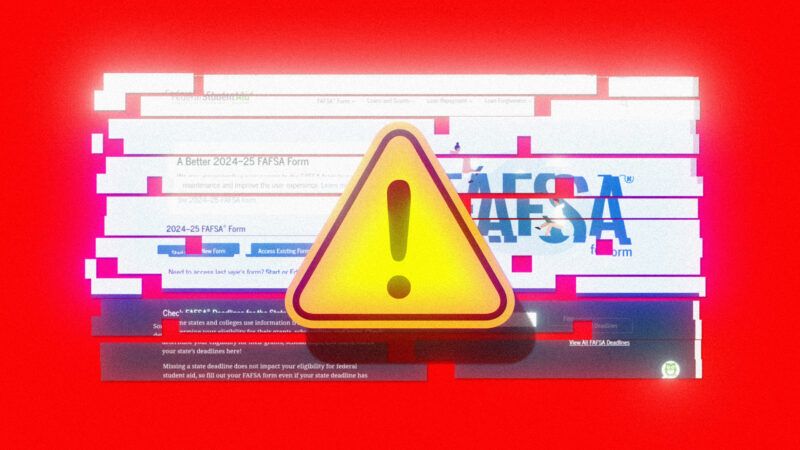FAFSA Glitches May Keep Students From Getting Crucial Financial Aid Info
Persistent technical difficulties have made completing the financial aid form nearly impossible for many applicants.

The Free Application for Federal Student Aid (FAFSA) is a vital tool for prospective college students and their parents seeking financial aid. Most colleges use the form when deciding how much aid to offer applicants, and over 17 million students end up filling out the form each year.
However, this year's FAFSA rollout has been plagued by glitches and delays, stemming from the Education Department's attempt to streamline the form. While an updated form was meant to make the application process easier, the department informed colleges that they wouldn't receive crucial FASFA data until sometime in early March—more than a month after the typical January 30 deadline.
As a result, colleges will likely be forced to delay financial aid offers—an outcome that could leave millions of students without the necessary information to decide where to enroll.
The path to an updated FAFSA form began in 2020, when Congress passed the Consolidated Appropriations Act, which required the Education Department to develop a streamlined FAFSA form. The new form cut the number of questions by more than half and uses data directly from the IRS to make the form even simpler.
However, the new form's release was riddled with delays. The FAFSA form is typically released in October each year. But this year's form wasn't available until December 30—and even then, the form was only accessible "periodically." Adding to the issues, families' deadline for submitting the form has stayed the same, meaning that applicants this year have much less time to complete the form.
If they even can complete the form, that is.
The new FAFSA's endemic glitches have been a particular source of frustration for students and their parents. "Things were not always clear," journalist Ron Lieber wrote in The New York Times, detailing his attempt to fill out the form on December 31. "At one point, the site was telling me that both my daughter and I had already started forms when in fact neither of us had, at least as far as I could tell."
Currently, the form is becoming nearly impossible to complete for swaths of students due to technical issues. According to the Federal Student Aid website, issues with the form have prevented students who accidentally checked an "eligible noncitizen" box from filling out the form, even after correcting their mistake, and caused some parents to be unable to fill out the form on behalf of their child. While these issues have workarounds, students whose parents don't have Social Security Numbers can't fill out the form at all.
As a result of these issues, millions of prospective college students might be unable to complete the form at all. For those who can fill it out, the colleges that have accepted them might not be able to offer timely financial aid information that families rely on when deciding where to enroll.
"This problematic rollout is causing more than just an administrative headache. For students—and even schools themselves—the ripple effect could be catastrophic," Justin Draeger and Ted Mitchell, presidents of the National Association of Student Financial Aid Administrators and the American Council on Education, respectively, wrote on Thursday. "Federal financial aid programs were created to open the doors to higher education, bringing a dream within reach for some who would otherwise be unable to unlock that future. Those who can least afford to pay for college will be the most adversely affected."
Forcing the Education Department to make the FAFSA less complicated is a perfectly good proposal. However, the new form's disastrous rollout shows what can happen when a student's ability to afford college is left in the hands of an unaccountable government agency. Instead of expanding access to college aid, a broken FAFSA form may close the door to millions of eager students.


Show Comments (16)